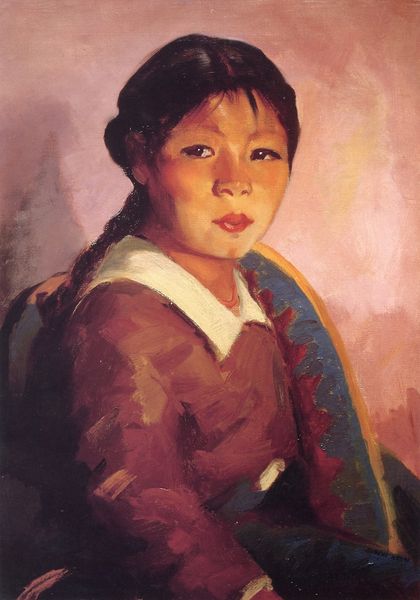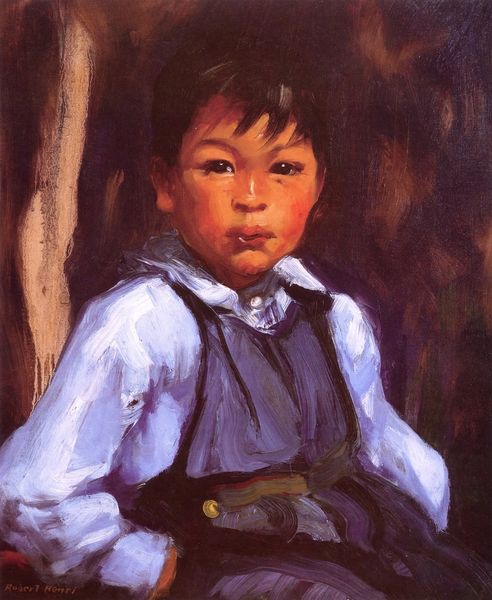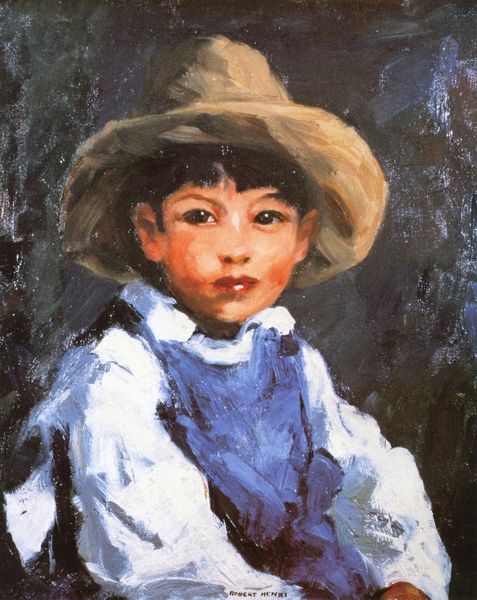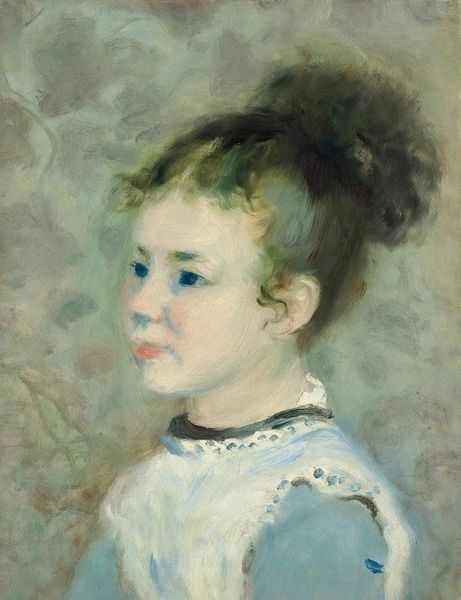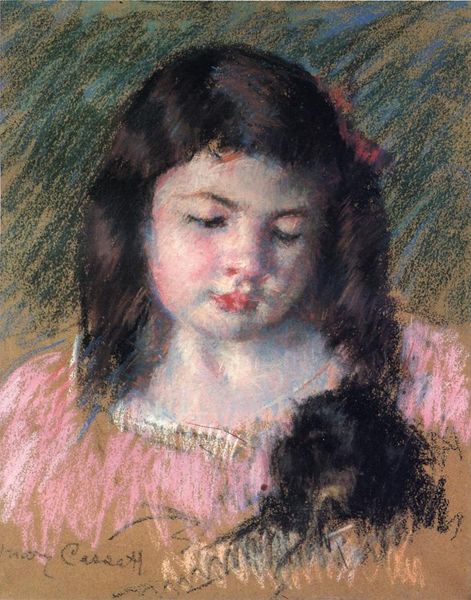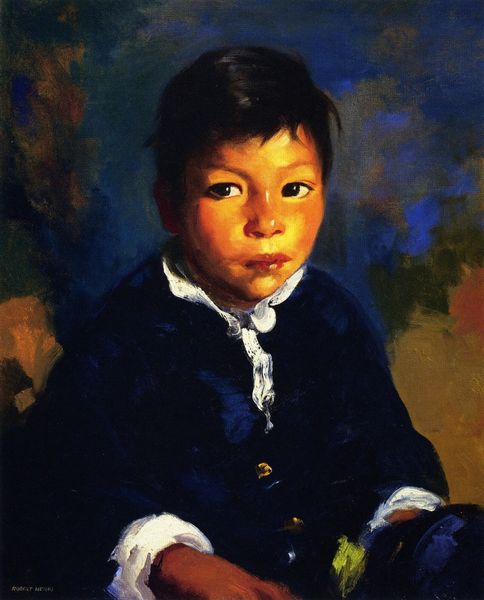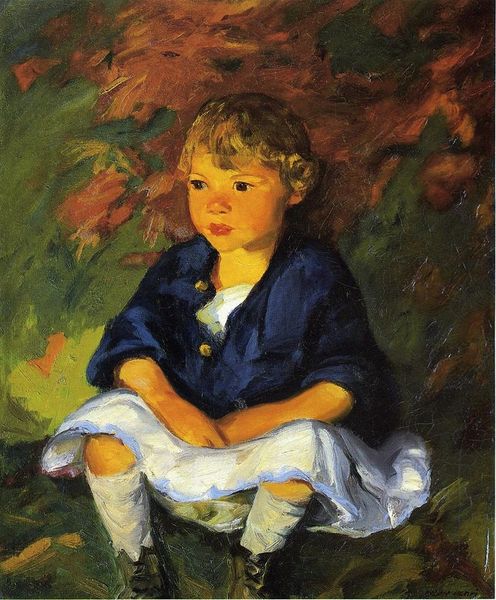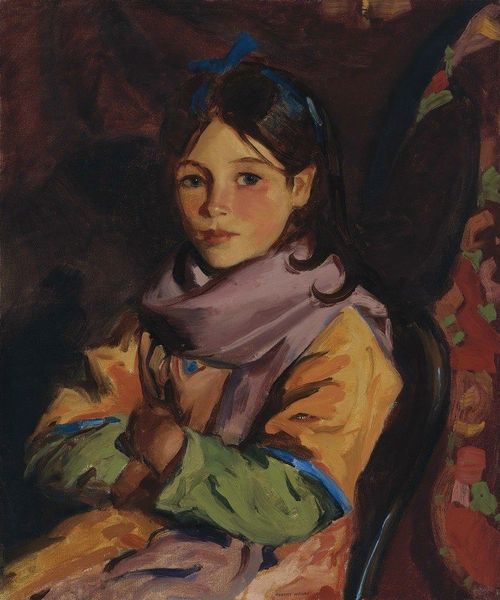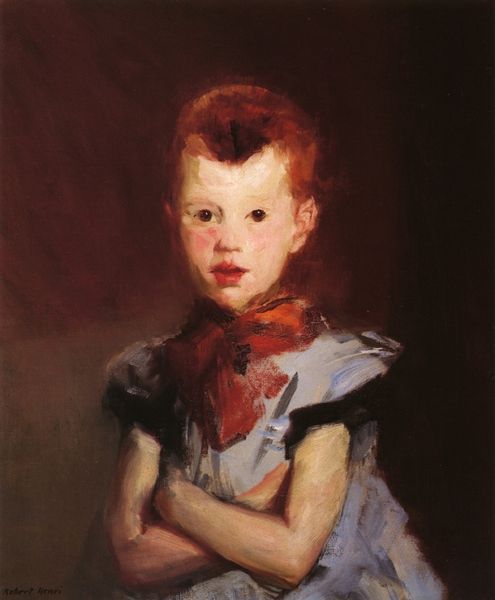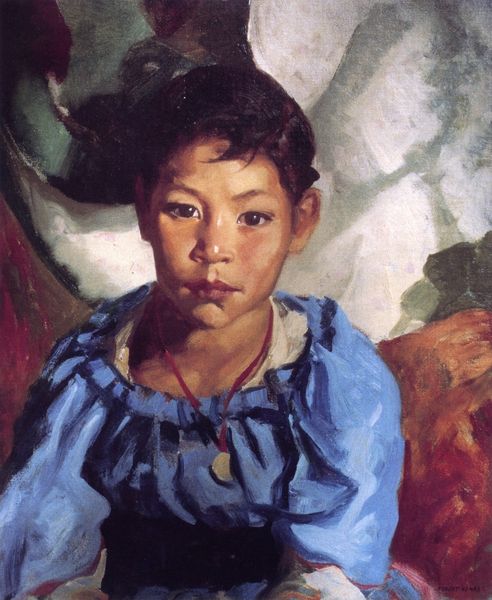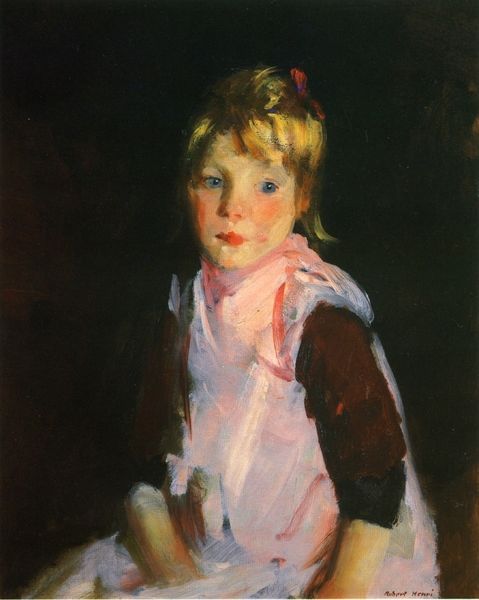
Copyright: Public domain
Editor: We’re looking at “Nelson,” painted by Robert Henri in 1914 using oil paints. I'm immediately struck by the sitter’s posture – arms crossed so tightly. It seems to convey a feeling of pensiveness, maybe even defiance. What do you see in this piece? Curator: That defiant posture you noted, combined with his gaze directed off to the side, speaks volumes. Think about what crossed arms often symbolize: protection, self-containment. Nelson isn't just a boy in a painting; he's a representation of childhood introspection at a crossroads. Editor: Crossroads? How so? Curator: Look at the brushstrokes, the vibrant colours in the background clashing yet harmonizing. Henri’s Impressionistic style invites us to consider Nelson’s internal world—the emotions and experiences that might shape his young identity. What story is that face trying to tell? Are we looking at childhood vulnerability, defiance, or both? What does it evoke in you? Editor: I hadn't thought of the colors contributing to the storytelling. Now that I consider the background, the colors represent the feelings and how they affect him. The painting evokes conflicting emotions: protection, but at the same time, he may be confined. Curator: Precisely. The art lives not only in the depicted image but in the reverberations between viewer, subject, and creator, creating an unbroken emotional continuity between generations. Editor: This has definitely changed how I see portraits. There’s so much more than just a likeness. Curator: Absolutely. Symbols are gateways; it is for us to look closer. Every element contributes to a greater narrative.
Comments
No comments
Be the first to comment and join the conversation on the ultimate creative platform.
